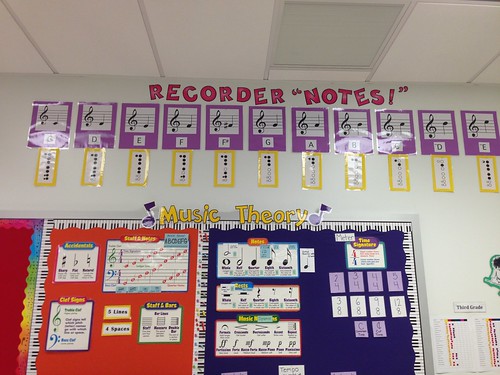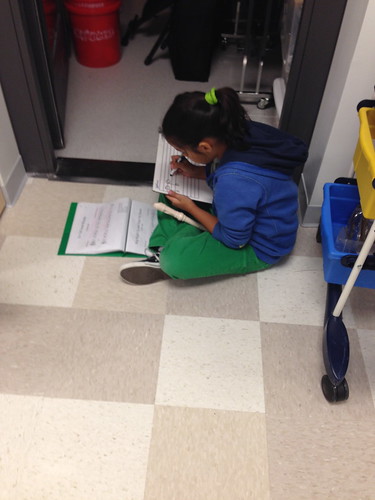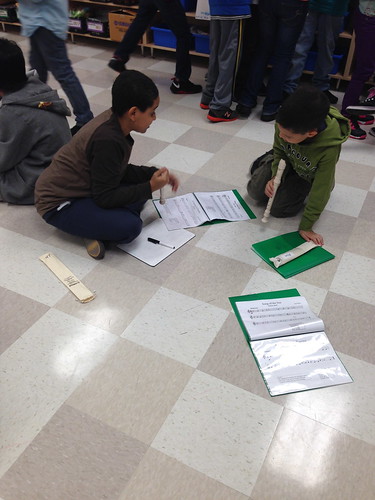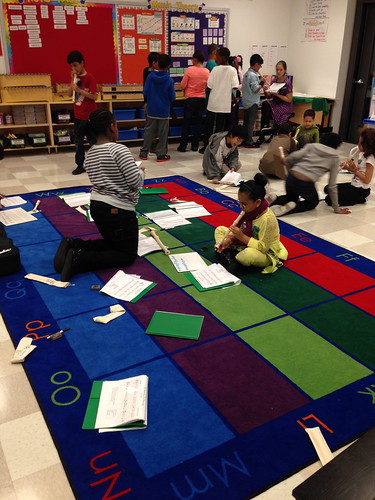Why Learn to Play the Recorder?
Recorder is the perfect instrument for teaching music literacy, sight-reading, composition and improvisation skills, and score analysis. While developing these skills during music class, students discover the joy of performing solo, in small groups, and in large ensembles on a real woodwind instrument. They become capable of using the recorder as an outlet for their musical thoughts and feelings by writing their own pieces and playing improvisation games. In addition to all of these social and standards-based benefits of learning to play recorder, students also develop habits of accountability and self-motivation through individual home practice sessions. They experience delayed gratification- working to master the instrument over months- or sometimes years- of training. Recorder is an instrument that everyone can be successful with. It is fun, easy to learn, and adds a beautiful melodic layer to the orff and drum pieces already in our students’ musical repertoire from their early years in our music program.
When, Where and How Does My Student Get a Recorder?
Our recorder program usually begins in third grade. Each year we hope to be able to buy a recorder for each of our 3rd grade students to take home as their own personal instrument. When your child brings home this recorder, please find a safe place to keep it. It belongs to your child and does not have to be returned to the school, even if you transfer or move. Consider it our musical gift to your child. It is intended to be their “Practice Recorder.” Your child will be expected to practice their music from class at home throughout their 3rd-5th grade years. Please be mindful to keep it away from younger siblings and pets. It is made of plastic and will break if handled inappropriately. You can clean it with hot (not boiling), mildly soapy water. Make sure to let it air dry very thoroughly. If you lose your recorder, you will have to pay $5 (cash only please) to Mrs. Traxler to purchase another one.
Your child will also have a second recorder that will stay at school. It belongs to the school, but is loaned to your child for the year. This recorder (which I clean myself throughout the year and over the summers) stays at school in the music room. In this way, your child never has to worry about bringing their recorder to and from school on music days. Saves everyone a LOT of headaches. Their “In-Class Recorder” is labeled with a number and their name. Students use the same recorder for all three years- 3rd-5th grade. (Again, I clean them throughout this time period. No worries!) They are kept in bins according to class and ensemble. (shown below)
What are the Main Aspects of Gateway’s Recorder Program?
Our students learn to play the recorder for many reasons. We use this particular instrument as our melody choice for many pieces that we learn. Much like our voice, the recorder has a lovely light sound that is perfect for playing melodies and harmonies accompanied by our xylophones, metallophones, glockenspiels, drums and other percussion. We also do a lot of composing and literacy lessons with our recorders as the primary sound source. We play recorder in almost every class, even when it isn’t the focus of the lesson. Many times the children will ask to learn a xylophone melody on recorder, so I feel that it has become another wonderful musical tool for exploration for our students.
Our Rainbow Recorder program is a large part of our music curriculum in grades 3-5. (It is modeled after the very popular Recorder Karate program that many schools in America use.) I have created 3 basic packets of music including 6 songs for each grade or level. The music in each packet gets progressively more difficult and follows the colors of the rainbow in order of difficulty. Third grade or Level One begins with a limited note range, limited rhythmic patterns, and only a few meter changes. The 4th grade packet or Level Two uses an extended range of notes as well as more difficult rhythms, new forms, and new meters. The 5th grade packet or Level Three packet includes more advanced musical elements as well as longer pieces with more complicated fingering passages. You can see all the songs and musical concepts if you click on the hyperlinks above. Students get copies of these packets at the beginning of each year to take home. They are expected to practice a few times each week. There are many links on my website to help them practice. We will have several sessions of Rainbow Recorder lessons spaced throughout the year. This gives the students ample time to work on improving their skills at home as we continue to explore other uses of the recorder in class.
Some children who really love to play end up advancing at a faster pace than the class. For these students, I have created the “Challenge Belts.” Once they achieve their full rainbow of belts (red, orange, yellow, green, blue, purple), they can begin to work on any of the challenge belt pieces. There are quite a variety of challenge belts to peek the interest of any kid: patriotic music, duets, solos accompanied by piano, compositions, scales and arpeggios, classical music, and multi-cultural pieces from around the world. They can choose the belts they want explore. All of these materials can be found on the Challenge Belts link.
Another great aspect of our school’s recorder curriculum is our 4th and 5th Grade Advanced Recorder Ensembles. You can learn more about these special opportunities for students if you visit the Recorder Ensemble Page Link.
How Does Mrs. Traxler Assess Student Learning on Recorder?
During our Rainbow Recorder sessions that are held 3 times a year, I listen to students one at a time to assess their playing and offer individualized feedback. I also offer constant feedback during recorder games and lessons during our regular classes as well. When I am assessing student performance, I am generally looking and listening for the following things: left hand on top, holes covered with flat finger prints, recorder angled downward, and a soft and light tone quality that doesn’t squeak or tremble. When they are trying to test a song, I am listening and looking for all those things stated above, as well as their ability to play the song accurately. This includes keeping a steady beat with little to no hesitation, correct pitches and rhythms, and correct form, tempo, and dynamic markings when they appear in the music. They are allowed no more than 2 mistakes in one song and must keep going to maintain the integrity of the beat.
When a student is not showing much progress over the course of a semester, I meet with that student individually outside of music class to tutor them and give them some extended one-on-one time. Some students catch on and begin to play with ease. Others take a little more work. No matter what, we all find a significant way to contribute to our classroom music-making.
How Can I Help My Child Practice at Home?
Even if you don’t think of yourself as a musician, you can certainly still help your child succeed in learning to play the recorder. Here are a few things that will get your started:
1. Help your child find a place to store their recorder and their music so that it doesn’t get lost or broken.
2. Encourage your child (remind them if necessary) to practice a few times a week.
3. Ask your child to play their recorder for you. Let them give you a little mini-concert before bedtime. They may choose to play part of a song they are working on or something they make up on the spot through improvisation. Whatever they decide to play, encourage them with some positive feedback and applause.
4. Visit my website with your child to look at the Recorder Materials Page. There are practice tips that we learn in class that will remind them how to conquer a difficult challenge.
5. If your child is playing with a squeaky sound, suggest they try one of the 3 strategies from our “Try 3” poster featured on our Recorder Practice Page.
6. Learn to play with your child! Contact me if you would like a recorder for yourself. There is nothing quite like learning a new instrument with your child to bring a family together.
























